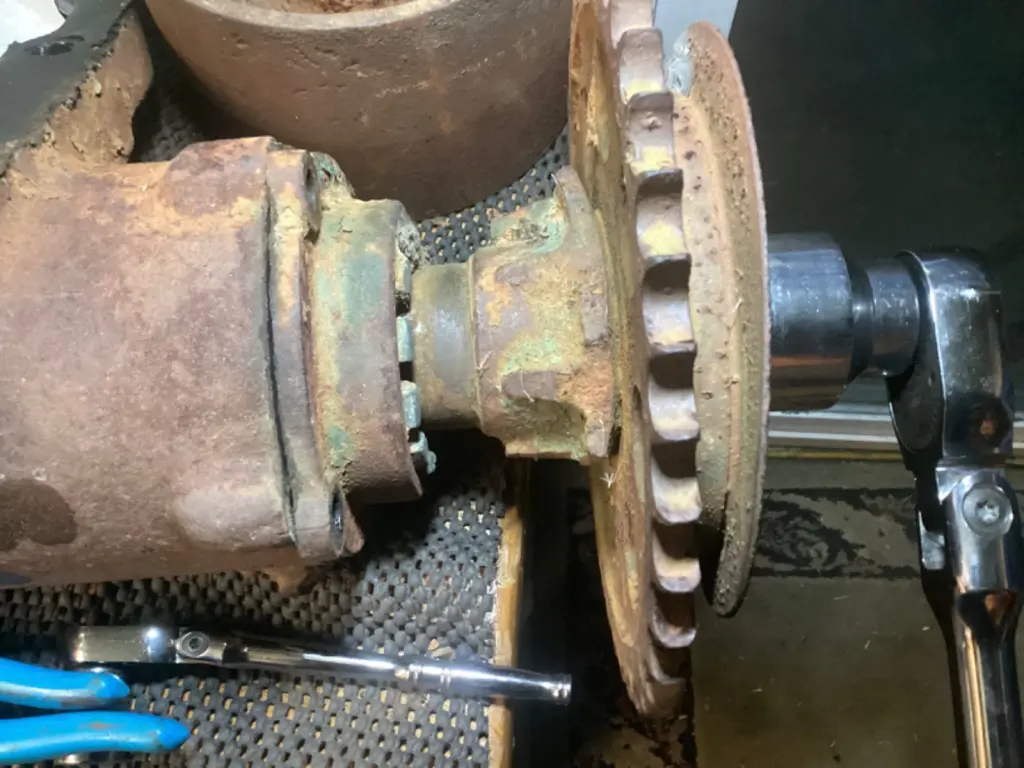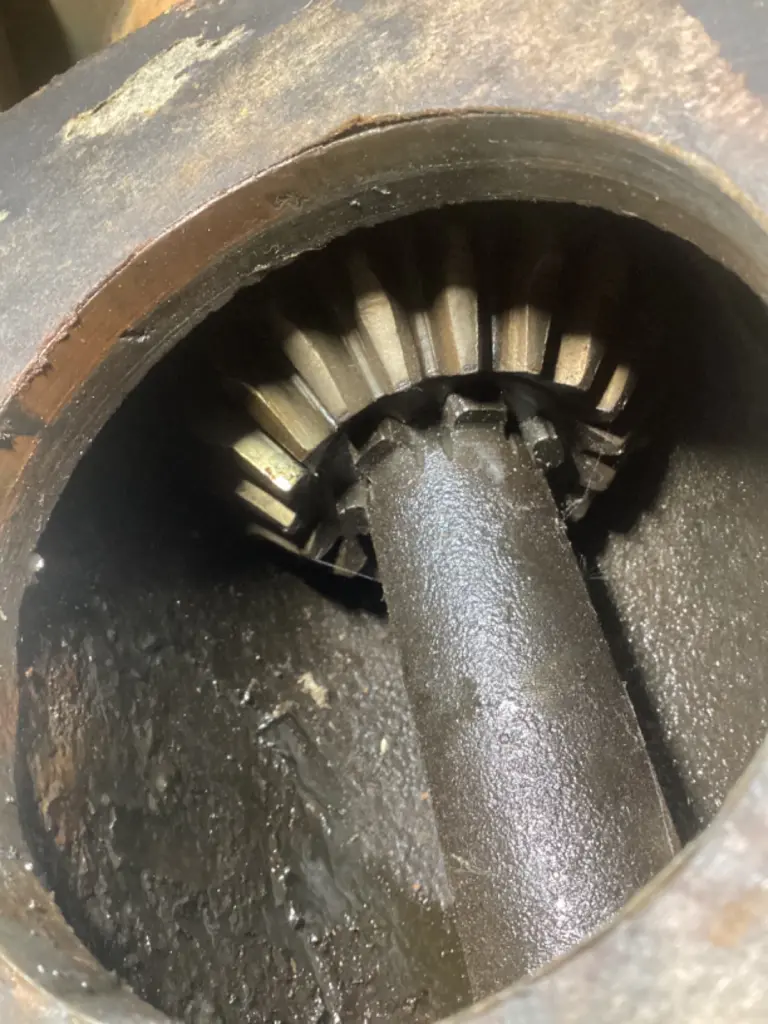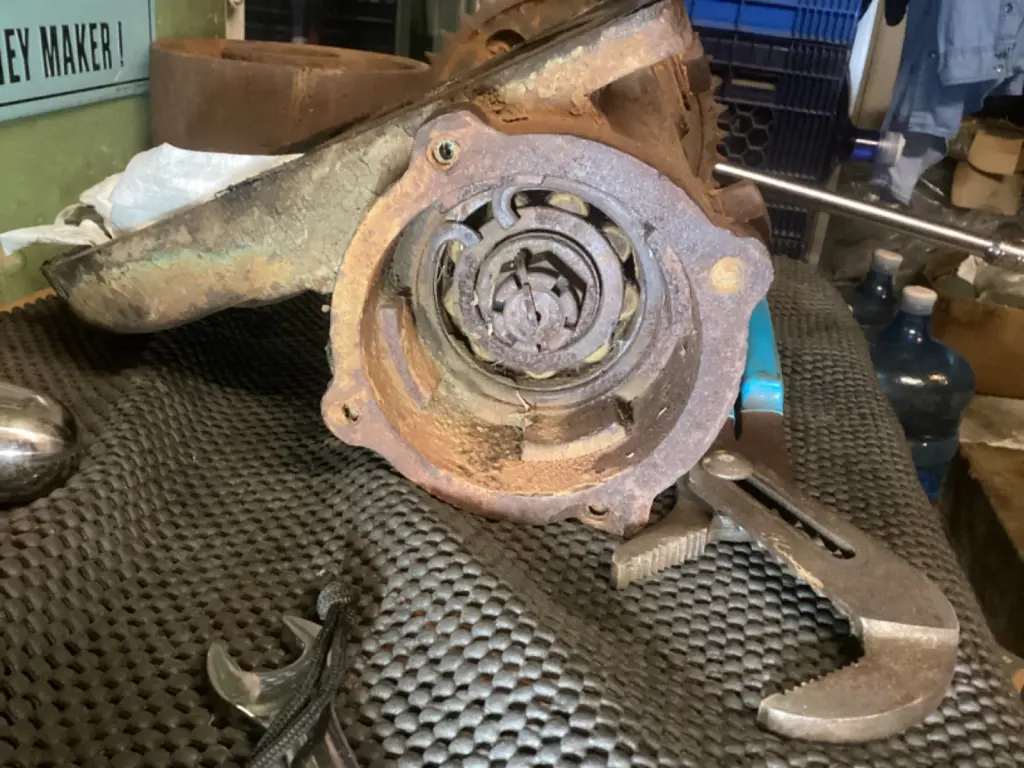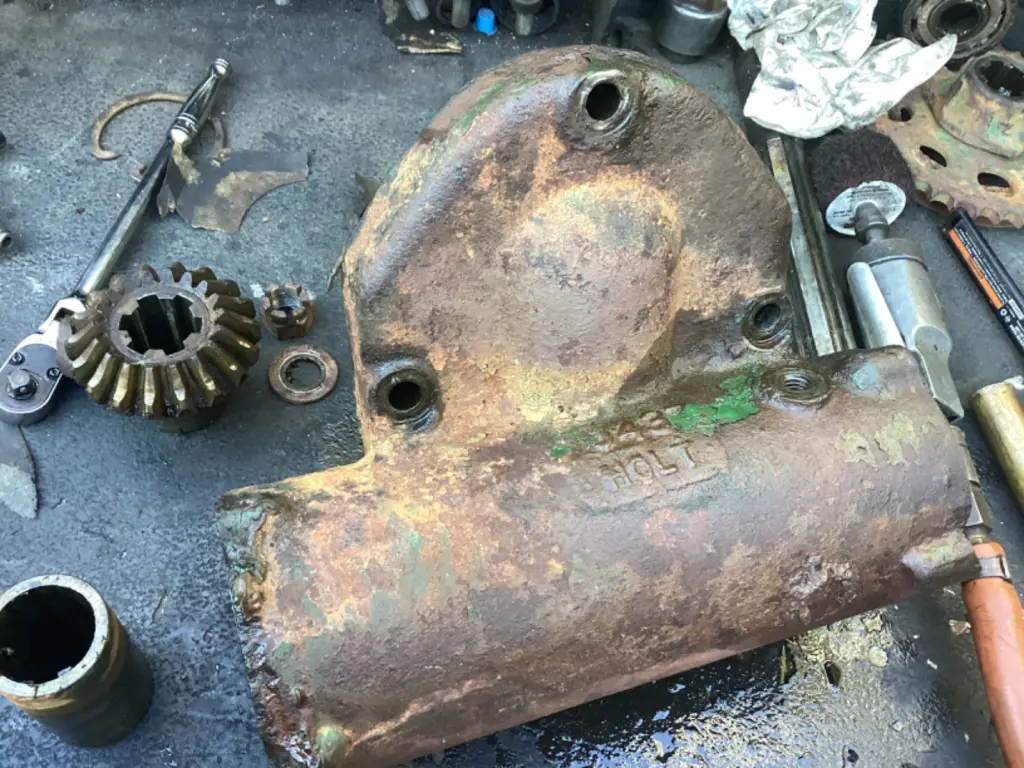






Ok, I got the pto apart. I was pretty close in my guess. Now, this is just for internet history so someone ten years from now will have some info on it.
The whole shaft slides in and out to mesh the 2 bevel gears and rotate the pulley. The engaging mechanism is 2 bolts that act as guides in a collar with 4 teeth that has a diagonal track machined into it. The lever has a spring loaded nub that falls into 2 holes (like a starting lever with 2 slots) that keeps the gears engaged or disengaged. It should also have a steel belt pulley. The paper pulley came later when it would become the caterpillar 2 ton. This is for a holt T35 pto pt number 04375
ps. I also found some green paint on the pto. It’s not the correct almost military green color, it’s more like a forest green that would be on a holt 45 or 75 engine. [attachment=78323]IMG_0764.jpeg[/attachment] [attachment=78324]IMG_0765.jpeg[/attachment] [attachment=78322]IMG_0769.jpeg[/attachment]
SoCalCatMan, it looks like the bearing moves in the housing is that correct? I see the diagonal grooves, therefore the output pulley moves with the main shaft back and forth?
There is a large roller bearing and a pretty sizable ball bearing (ball bearing goes in the slotted piece and is held in place with a large c clip). The roller has a sleeve that goes over the main shaft and inside the bearing to support the weight of the pulley. That is on the right side. The sleeve lets the shaft glide side to side inside the roller bearing. That one stays put in the casting. The ball bearing is on the left side, lever side. The ball bearing goes over the shaft and inside the slotted piece, secured by a c clip. When the slotted piece is rotated via the lever, the ball bearing pulls on slotted piece and the whole shaft moves. The pulley moves back and forth with the shaft. I hope I conveyed it correctly. It’s very simple when looking at it in real life. Trying to break it down sounds a little more confusing than it actually is. When it’s done getting cleaned up I’ll post a few more pics of assembly.